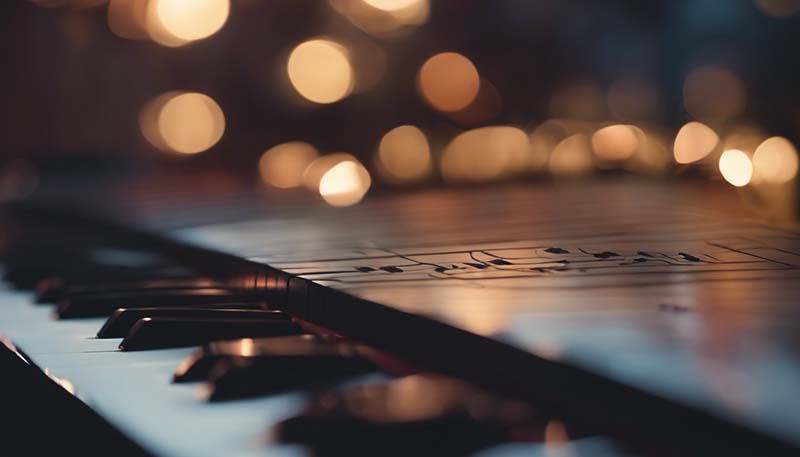The Power of Film Score: A Study of How Music Shapes the Emotional Journey
The Power of Film Score: A Study of How Music Shapes the Emotional Journey
Film scores are an essential part of the cinematic experience, working in tandem with the visuals to create a rich tapestry of emotions that can deeply affect the audience. This study explores the intricate relationship between music and emotion in films, examining how composers use various techniques to evoke specific feelings and how these emotions contribute to the overall narrative and impact of the movie.
The Role of Music in Film
Music in film serves several purposes, including setting the mood, enhancing the narrative, and providing emotional cues to the audience. It can also create a sense of continuity and unity across different scenes, as well as provide a memorable signature for the film.
Emotion and Music
Music has a profound effect on human emotions. It can evoke a wide range of feelings, from joy and excitement to sadness and fear. The emotional impact of music is influenced by various factors, including melody, harmony, rhythm, tempo, and instrumentation.
Advertisement
Techniques Used by Composers
Leitmotifs
A leitmotif is a recurring musical theme associated with a particular character, idea, or situation. It helps to create a sense of identity and continuity, allowing the audience to immediately recognize and connect with the associated element.
Tempo and Rhythm
The tempo and rhythm of a piece of music can significantly affect the emotional response. Faster tempos and rhythms are often associated with excitement, tension, or action, while slower tempos and rhythms can evoke feelings of sadness, calm, or introspection.
Harmony and Dissonance
Harmony and dissonance are powerful tools for manipulating emotions. Harmonious music tends to create a sense of comfort and resolution, while dissonance can evoke feelings of unease, tension, or conflict.
Orchestration and Instrumentation
The choice of instruments and the way they are orchestrated can also contribute to the emotional impact of the music. For example, strings are often used to convey deep emotions such as love or sorrow, while brass can create a sense of grandeur or danger.
Case Studies
This study will delve into several case studies of iconic film scores, analyzing how the music complements the visuals and contributes to the emotional journey of the characters and the audience.
Star Wars
John Williams' score for Star Wars is a prime example of how music can enhance a film's narrative and emotional depth. The use of leitmotifs, such as the Imperial March for Darth Vader, has become synonymous with the characters and their emotional arcs.
The Lord of the Rings
Howard Shore's score for The Lord of the Rings trilogy is another excellent example of music shaping the emotional journey. The film's themes and motifs evolve as the characters' journeys progress, reflecting their growth and the unfolding narrative.
Psycho
Bernard Herrmann's score for Psycho is a masterclass in using music to create tension and fear. The infamous screeching violins during the shower scene have become a cultural shorthand for horror and suspense.

Conclusion
The film score is a powerful tool for storytelling and emotion. By understanding the techniques composers use to evoke emotions through music, we can appreciate the depth and complexity of the cinematic experience. The film score not only enhances the narrative but also creates an emotional connection between the audience and the story, making it an indispensable element of film.
References
Kalinak, K. (1992). Settling the Score: Music and the Classical Hollywood Film. University of Wisconsin Press.
Smith, J. (1998). The Sounds of Commerce: Marketing Popular Film Music. Columbia University Press.